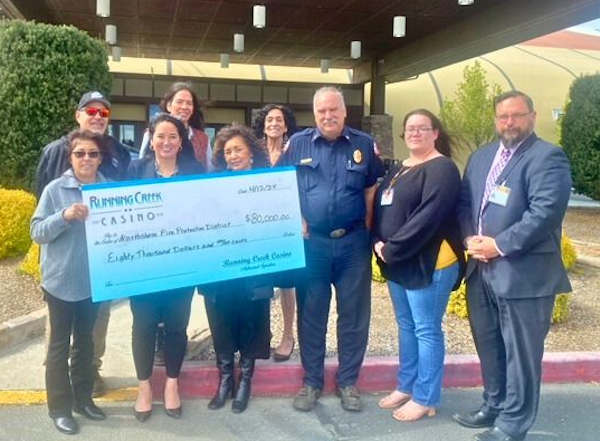- Lake County News reports
- Posted On
Clearlake City Council approves AI policy, updated city manager contract
City Manager Alan Flora presented the new generative artificial intelligence, or AI, policy to the council, explaining that the technology is now making its way into all sorts of software being used by the city.
As an example, he said that the video system that the police department uses for its body cams and cars uses AI.
At a recent city managers conference, Flora said there was a lot of talk about the municipalities using AI which, from his perspective, can be both quite powerful and troubling.
He said AI can add value to the city’s work and getting a policy in place for staff is “a good step.”
The four-page policy, found in the staff report, includes a list of acceptable uses of generative AI, that includes creating an outline for written content, copying a document into a generative AI tool for the purposes of summarizing and/or querying it, suggesting writing improvements, learning about and exploring topics, analyzing different types of data, idea generation and research.
Requirements for use include staff being responsible for all outcomes of generative AI used for work purposes, conducting fact checks, providing attribution whenever generated content is published including images, opting out of data collection whenever possible, and not using generative AI to generate code or audio at this time.
With AI rapidly changing, Flora said the city will need to take a fresh look at the policy on a regular basis.
He said Mayor David Claffey probably knows more about AI than anyone else in the room, and he went over the proposed policy with Claffey ahead of time.
Flora said they had discussed having a review of the policy every couple of years, and he said he could go ahead and add that into the policy.
Councilmember Joyce Overton said that, because she expected AI to change so much so fast, the city policy needs to be reviewed every year, and she suggested it be done during the budget process.
Councilmemember Dirk Slooten said he wholeheartedly agreed. “We need to keep on top of it, definitely,” Slooten said, adding he also wanted an annual review.
“There are very few jurisdictions that are thinking like this,” said Claffey, who thanked Flora for putting the new policy together. “This is the way we need to be thinking.”
Claffey said there are so many great tools coming that will benefit small cities like Clearlake, and that they needed to give staff flexibility to try those tools.
Slooten moved to approve the policy with the addition to have it reviewed on a yearly basis. Overton seconded and the council approved the policy 5-0.
Also on Thursday, the council approved a new employment services agreement with Flora.
City Attorney Ryan Jones said Flora has been with the city for five years, twice as long as the average city manager tenure in California. He said that’s a testament to the longevity, consistency and stability in the city government.
Jones emphasized that the new contract did not change any of the fiscal aspects — Flora’s $16,342.05 a month salary, his benefits and other terms of the agreement — but rather extended Flora’s current three year contract by one year. It will now continue for another two years — rather than ending next year. Hopefully at that point the council will extend it again, Jones said.
The new contract also includes a provision requiring that terminating Flora without cause would require a 4/5th vote of the council for a period of year after the election of a new council member. Jones noted that termination for cause doesn’t require a 4/5th vote.
Councilman Russ Cremer moved to approve the updated contract, with Overton seconding.
In what Mayor Claffey called “one of the longest seconds in city council history,” Overton noted that she has served almost 20 years on the council and respects Flora highly.
“You have saved us in many situations that I cannot believe you got us out of some of them,” Overton said, adding that it’s a privilege to work with Flora and she wanted to say it publicly.
“You deserve everything that we can possibly offer you,” she said.
The council then approved the new contract 5-0.
Also during the meeting, which lasted just under an hour, the council agreed to pull from the consent agenda Resolution 2024-18 authorizing the city to submit an application to the California Department of Housing and Community Development for funding under the Competitive Permanent Local Housing Allocation.
If the city is successful with the application, which will seek up to $5 million, it will in turn loan the funds to the developers of Konocti Gardens, a new apartment complex project that has gone into the red due to factors including a variable interest rate on its construction zone that went up and unanticipated infrastructure improvements that are necessary.
In other business, the council presented a proclamation declaring April 2024 as Child Abuse Prevention Month, met one of the shelter’s adoptable dogs, “Turbo,” a male Belgian malinois mix, and received an update on the shelter population.
Email Elizabeth Larson at This email address is being protected from spambots. You need JavaScript enabled to view it.. Follow her on Twitter, @ERLarson, or Lake County News, @LakeCoNews.

 How to resolve AdBlock issue?
How to resolve AdBlock issue? 









